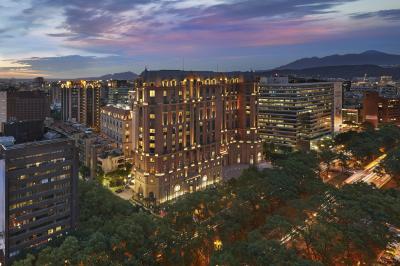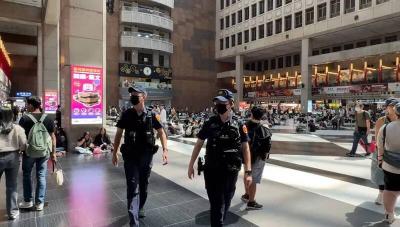Researchers claim to have unlocked the interaction patterns between the seabed fluctuations in the southwestern oceanic area of Taiwan, which is home to many underwater mud volcanoes, and the ebb and flow of tides.
A team from National Central University also discovered that during seabed fluctuations caused by changes in tides, methane gas is released into the water and atmosphere, which may be collected for energy resources or become greenhouse gas.
At a press conference at the National Science Council yesterday, Hsu Shu-kun (許樹坤), a professor of earth sciences at the university, said there are many mud volcanoes about 100m tall located 500m or more below the surface of the sea in that area.

Photo: Chen Yi-ching, Taipei Times
His council-funded team found that as the tide changes, the depth of the water also changes, leading to changing water pressure on the seabed.
When the tide is low, Hsu said, the water becomes shallower, reducing the water pressure on the seabed, whereupon methane clathrate (methane trapped within a crystal structure of water, in the form of a solid) under the seabed releases the methane component and is released from the more shallow parts of the seabed.
Hsu said the release of methane from the seabed about 500m underwater and the fluctuations of the seabed in connection with the changing tide work like a “water pump.” He said such a process has not been found in other parts of the world.
Based on the data gathered so far, the concentration of methane and carbon dioxide released as a result of seabed fluctuations is very high, Hsu said.
If ways were found to collect the methane, Hsu said, it could be turned into a valuable energy source.

The first global hotel Keys Selection by the Michelin Guide includes four hotels in Taiwan, Michelin announced yesterday. All four received the “Michelin One Key,” indicating guests are to experience a “very special stay” at any of the locations as the establishments are “a true gem with personality. Service always goes the extra mile, and the hotel provides much more than others in its price range.” Of the four hotels, three are located in Taipei and one in Taichung. In Taipei, the One Key accolades were awarded to the Capella Taipei, Kimpton Da An Taipei and Mandarin Oriental Taipei. Capella Taipei was described by

EVA Airways today confirmed the death of a flight attendant on Saturday upon their return to Taiwan and said an internal investigation has been launched, as criticism mounted over a social media post accusing the airline of failing to offer sufficient employee protections. According to the post, the flight attendant complained of feeling sick on board a flight, but was unable to take sick leave or access medical care. The crew member allegedly did not receive assistance from the chief purser, who failed to heed their requests for medical attention or call an ambulance once the flight landed, the post said. As sick

A drunk woman was sexually assaulted inside a crowded concourse of Taipei Railway Station on Thursday last week before a foreign tourist notified police, leading to calls for better education on bystander intervention and review of security infrastructure. The man, surnamed Chiu (邱), was taken into custody on charges of sexual assault, taking advantage of the woman’s condition and public indecency. Police discovered that Chiu was a fugitive with prior convictions for vehicle theft. He has been taken into custody and is to complete his unserved six-month sentence, police said. On Thursday last week, Chiu was seen wearing a white

The Taichung District Court yesterday confirmed its final ruling that the marriage between teenage heir Lai (賴) and a man surnamed Hsia (夏) was legally invalid, preventing Hsia from inheriting Lai’s NT$500 million (US$16.37 million) estate. The court confirmed that Hsia chose not to appeal the civil judgement after the court handed down its ruling in June, making the decision final. In the June ruling, the court said that Lai, 18, and Hsia, 26, showed “no mutual admiration before the marriage” and that their interactions were “distant and unfamiliar.” The judge concluded that the couple lacked the “true intention of